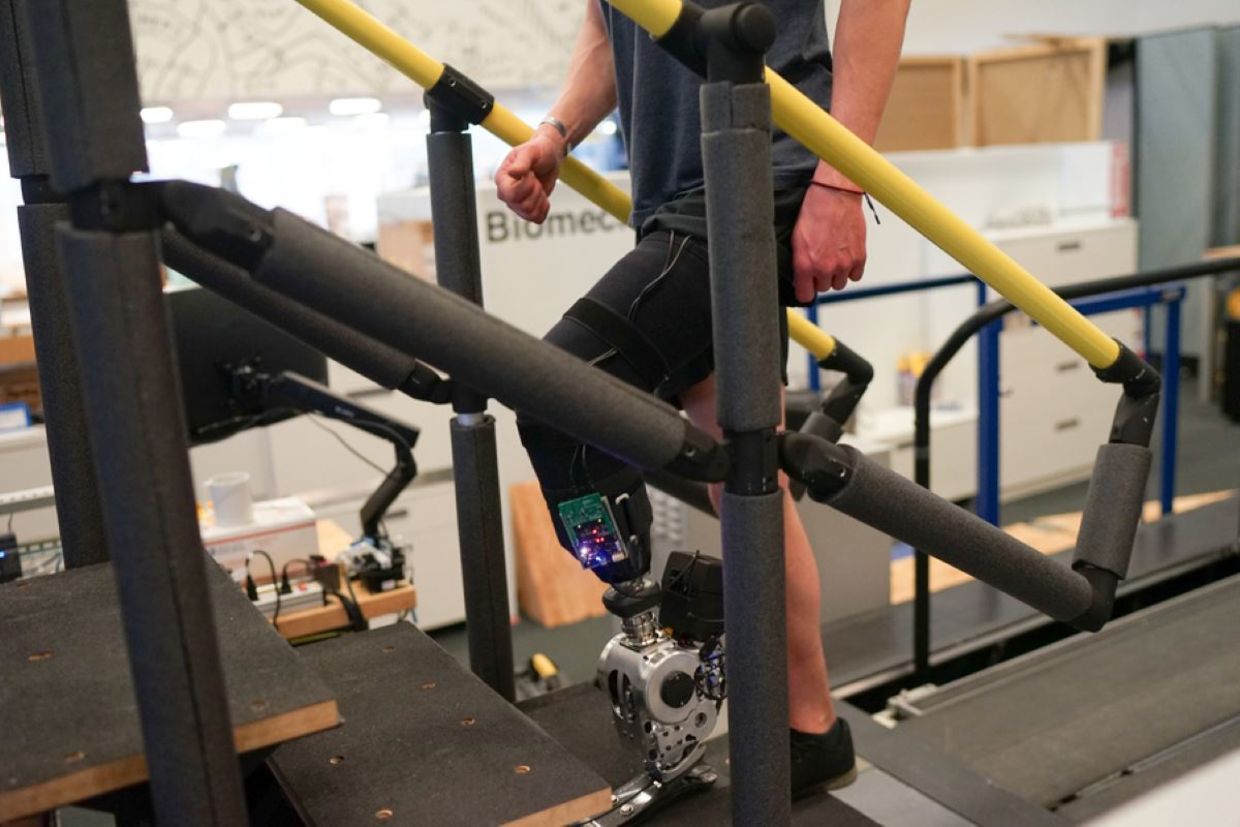
(Courtesy of Hugh Herr and Hyungeun Song)
New technology is changing the prosthetics industry. From humble beginnings with wooden legs and hooks, the industry has evolved to state-of-the-art robotic artificial hands, arms, and legs that are user friendly and allow amputees to live more inclusive lives. The Paralympics certainly attest to that.
Now a new study conducted at the Massachusetts Institute of Technology (MIT) that was published in nature medicine, has gone above and beyond robotics with a brain-controlled leg prosthesis – a bionic leg of sorts – that can help amputees walk more naturally with improved stability on stairs and uneven ground.
“This is the first prosthetic study in history that shows a leg prosthesis under full neural modulation, where a biomimetic gait emerges. No one has been able to show this level of brain control that produces a natural gait, where the human’s nervous system is controlling the movement, not a robotic control algorithm,” Hugh Herr, a professor of media arts and sciences, co-director of the K. Lisa Yang Center for Bionics at MIT, and the senior author of the new study said in a news release from MIT.
About the historic study
The new prosthesis requires residual muscles that can be used to allow the wearer's nervous system to control the movement. This requires a new type of surgical intervention that includes an AMI neuroprosthetic interface, according to the news release. The surgical procedure reconnects the muscles in the limb that are used for movement and allows the user to control the bionic leg themselves instead of relying on robotics.
The study compared seven people who had the surgical procedure with seven people who had undergone a traditional below-the-knee amputation. All of the participants used the same bionic leg which consisted of a prosthesis with a powered ankle that controlled the foot as well as electrodes that could sense signals from their leg muscles.
The powered ankle allows the wearer to point, flex, and rotate the foot of the prosthesis by thinking about it, reported The Guardian. All the study participants were tested in different movements including level walking, going up a slope, down a ramp, going up and down stairs as well as avoiding obstacles.
“With the AMI cohort, we saw natural biomimetic behaviors emerge,” Herr said in the news release. “The cohort that didn’t have the AMI, they were able to walk, but the prosthetic movements weren’t natural, and their movements were generally slower.”
Going forward
A drawback could be the need to have a surgical procedure that requires further amputation to reconnect the muscles but this could change the way amputations are done so that the leg muscles that are needed for the new bionics can be maintained., according to The Guardian.
Dr Sigrid Dupan, an expert in prostheses at University College Dublin, but not a part of the study, told The Guardian that this new development that tapped into the body and brain’s abilities instead of relying on increasingly complex technology is exciting. “I’m looking forward to seeing how this research develops, and would love to see a broader implementation of this surgical approach,” she said.
The MIT researchers hope that the new mind-controlled prosthesis can be commercially available within five years so that many amputees can benefit from the new interface. Herr said “It’s going to lead to a step-change in clinical care for so many patients around the world. We’re very passionate about getting this technology out to the patients who need it.” This bionic leg can be a real game changer in increasing mobility and improving the quality of life for wearers.
YOU MIGHT ALSO LIKE:
Introducing the First Bionic Clothing
Researchers Develop Biomimetic Prosthesis Similar to a Human Hand
High School Engineering Students Create a Robotic Hand for Classmate







